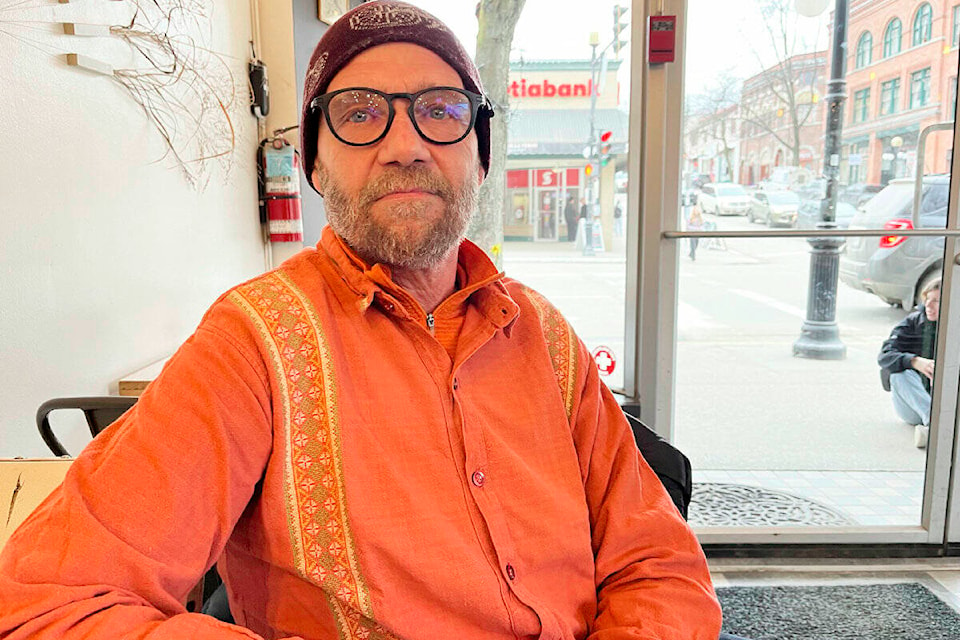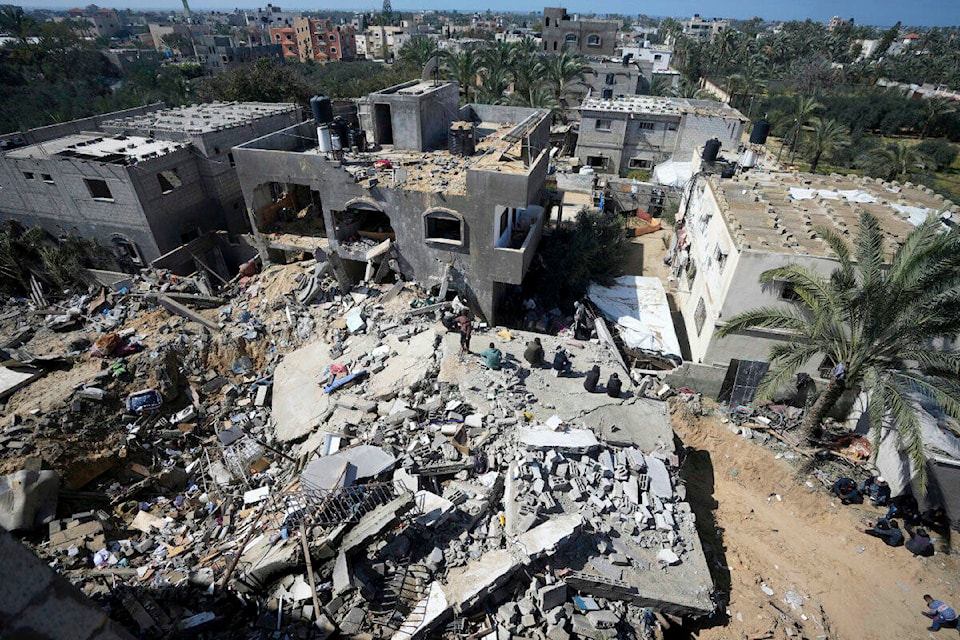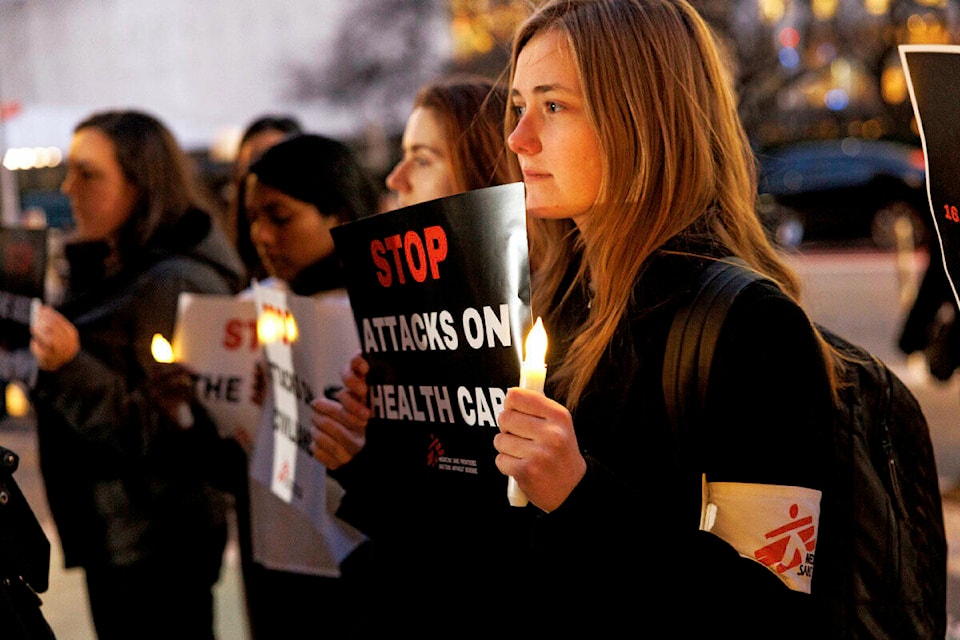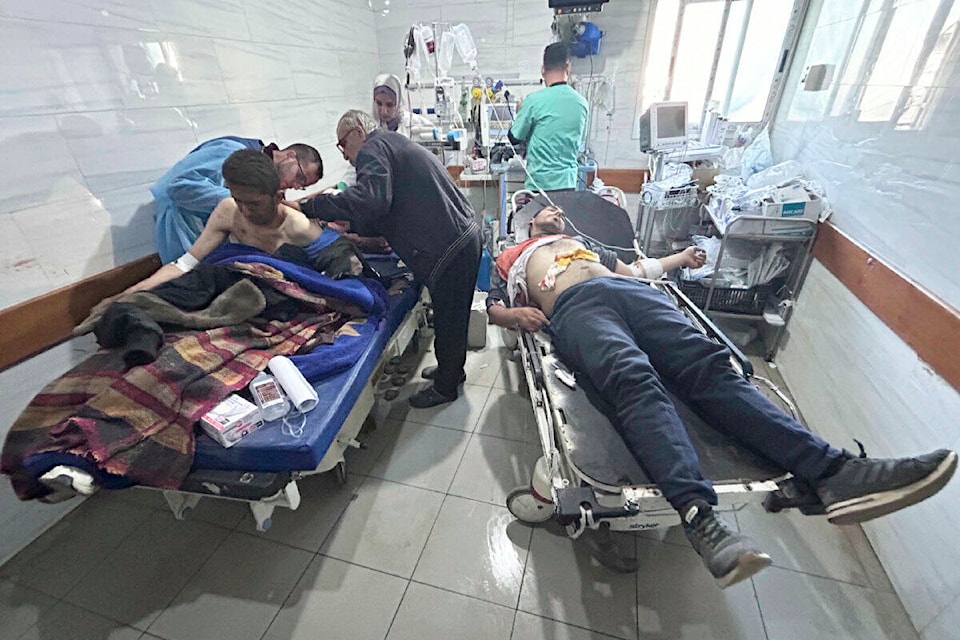Paul Caney thought he had a deal in place that would save his colleagues.
In November, over 100 staff members of Médecins Sans Frontières, known in North America as Doctors Without Borders, and their families were trapped at an office and guesthouse in Gaza City. Fighting between Hamas and the Israel Defence Force (IDF) in the surrounding neighbourhood meant they couldn’t leave the building and evacuate south, as Caney hoped they would do.
Caney, a Nelson native, works as a logistics co-ordinator for Médecins Sans Frontières (MSF). From his base in Jerusalem, Caney negotiated with the IDF for the group to be permitted safe passage through the Wadi Gaza checkpoint a short drive away.
Then on Nov. 18, after a plan was agreed on, five vehicles marked with MSF logos left the location en route to the checkpoint. There wasn’t room for everyone, so those who had to walk carried white flags.
Confusion ensued at the checkpoint. First the IDF turned away the convoy, then after Caney called again they were allowed to continue but sent to the back of the queue where thousands also waited.
As evening approached, the convoy decided to give up. On their return, they approached a street with an Israeli tank and snipers on rooftops. The vehicles turned onto a side street just as the IDF opened fire. Tank fire hit a vehicle, killing one person inside, and a sniper’s bullet struck the head of MSF nurse Alaa Al-Shawa who was sitting at the front of another car.
Al-Shawa died a short time later. MSF has since condemned the attack and called for an independent investigation.
“The next day [the IDF] came, destroyed all our cars and lit the clinic on fire, fired into the office and terrorized a bunch of people,” said Caney.
Over 40 people in the group ran away or disappeared, according to Caney. A second rescue attempt was made after Caney hired a bus and two cars to drive up from the southern city of Rafah. But in the early hours of Nov. 24, which was supposed to be the start of a six-day cease fire, the IDF returned and again destroyed the vehicles.
The people remaining left later the same day in the vehicles of other evacuating civilians. They made it to an MSF guest house in Rafah, but had to leave again after a tank shell fired at the building killed a five-year-old girl and one of the drivers.
These are the conditions under which MSF is trying to deliver health care.
“We have people working for us who have lost everything and they continue to work because that’s what they cling to,” said Caney. “We have other people who haven’t suffered nearly as tragic losses but completely checked out and can’t work. They’re debilitated by trauma.”

Caney, who spoke to the Nelson Star after temporarily returning home, joined the non-governmental organization in 1994. Over three decades he’s worked at MSF postings in Latin America, Eastern Europe, the Middle East and Africa setting up medical facilities, managing staff and organizing everything from supply chains to security details.
The job sometimes requires Caney to work on the edge of active war zones. His first assignment during the Bosnian War in Sarajevo, which was under siege for nearly four years. Caney says that’s comparable to the conflict in Gaza.
“It’s the largest burgeoning humanitarian catastrophe on Earth.”
Hamas attacked Israel on Oct. 7, killing approximately 1,200 people, injuring 5,400 others. They also kidnapped 253 people, among them seniors, children and people with disabilities.
Israel’s retaliation has devastated Gaza. The Palestinian Ministry of Health said Feb. 29 that over 30,000 people had been killed and 71,000 injured. Nearly 8,000 Gazans have been reported missing or under rubble, and 1.7 million people — or 75 per cent of the population — has been displaced.
Caney arrived in Jerusalem on Oct. 23. Prior to the conflict, MSF’s main role was to bring plastic surgery equipment to hospitals in Gaza. Now it needed to provide emergency health care in a war zone.
“Because of the violent and extremely volatile situation in Gaza, we can’t even come up with a program idea because next week the hospital we’re working in is gone. Or trying to do a mental health program when the entire population is traumatized.”

In a situation report published March 3, the World Health Organization said only 33 per cent of Gaza hospitals are considered partially functional, while just 24.4 per cent of primary health care facilities are operating.
WHO estimates 8,000 patients in critical care require medical evacuation out of Gaza, and also reported ongoing outbreaks of diarrheal illness and hepatitis-A.
Famine is also threatening Gaza. A presentation made by aid agencies to the United Nations Security Council on Feb. 27 warned at least 576,000 people are in danger of starvation.
Caney said MSF has been able to bring medical supplies into Gaza, but anything non-medical is restricted if the IDF believes it can be weaponized. That means no construction materials, fuel or generators.
Despite that, Caney said MSF teams are maintaining ongoing surgical and wound dressing operations in Gaza as well as programs for obstetrics and mother-child health. Some staff, he said, have not taken a day off since Oct. 7.
In the background, Caney is in constant communication with the IDF to update them on MSF operations and locations, as well as advocating for the safety of staff and patients. It’s a dialogue he describes as “schizophrenic” but necessary.
“It’s a point of discussion often with the Israeli military because what they say and what they do is quite different. They talk about the hospitals being protected zones … but in practice, when the shell they are firing hits the fence of the hospital, then obviously they aren’t respecting the demilitarized zone around the hospital.”

MSF secretary general Christopher Lockyear addressed the United Nations Security Council on Feb. 22 and called for a ceasefire as well as the protection of medical facilities, staff and patients.
Still, there have been small victories. Caney allowed himself to enjoy a beer after MSF converted an unfinished hospital into a functioning surgical centre in less than three weeks with little access to contractors or construction tools.
Caney plans to return to the post in April. He has little hope for the conflict, especially if IDF’s ground operations expand into Rafah where more than one million Gazans have fled to.
But he would also consider staying long term to help if Israel and Hamas can negotiate a permanent cease-fire.
“If somehow the hostilities dim and there’s some concrete decisions made, the rebuilding of Gaza will take decades. I’ll probably be dead before it’s finished, but I would participate in that. I feel rather emotionally connected to this particular conflict.”
READ MORE:
•
•
•
•



